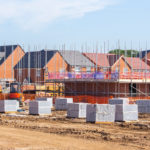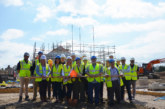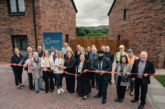 Michael Parkinson, Director of North and Scotland at Stantec, discusses what Homes England’s new plan says about the future of development.
Michael Parkinson, Director of North and Scotland at Stantec, discusses what Homes England’s new plan says about the future of development.
The new five-year plan from Homes England aims to drive regeneration and housing delivery to create ‘high-quality homes and thriving places’. Within the plan itself there is, of course, a lot to digest. But in essence, this mission document serves as an aspirational shift for the agency, with a refreshed focus on the power of public and private partnerships, as well as the meaning of ‘pride in place’.
The most crucial factor to note is how central measurement and accountability are kept within the plan itself. There are a significant number of new KPIs established as critical metrics aligned to strategic objectives. From the amount of brownfield land reclaimed and housing capacity unlocked, to building performance levels and biodiversity net gain. These 18 indicators are intended to show real, trackable progress over the next five-year period. At the same time, there is a huge emphasis around the value of bringing groups together — an undeniable recognition that vast cross-sector collaboration is mission critical.
Bringing stakeholders to the development table has always been vital when levelling up areas. Boosting social justice and truly regenerating communities which have fallen on hard times simply can’t be done effectively while working in siloes. Planners, local governments, developers, communities themselves, and the agency must come together to better understand the real needs, challenges, and opportunities ahead.
Adding real value
Notable within the plan is how social value is defined, valued, and measured. Homes England has chosen the HM Treasury’s Green Book definition of social value to base its fifth KPI on, tracking success per pound of investment. The plan deems engagement with communities as critical to designing places that meet peoples’ needs. Regardless of how the agency chooses to measure social value, we all know that proactive community engagement and grounded empathy must remain at the heart of efforts.
Success of the plan boils down to offering English communities more housing, better job opportunities, robust transport links and useful amenities, while doing this sustainably and preserving green space. A crucial question remains around where these benefits are born from. Rightfully, the plan emphasises the importance in making use of the large swathes of underutilised land at the heart of England’s towns and cities. The plan holds a significant spotlight up to brownfield sites.
The plan’s ‘Brownfield-First Approach’ aims to unlock much more brownfield land for regeneration efforts, with the plan’s first KPI focused on this. Doing this as efficiently as possible will mean getting buy in from all stakeholders. The plan states that building and maintaining long-term relationships with partners and working in a joined-up way is key to success.
Using evidence to inform priorities
At Stantec, we take a transformational and holistic view to brownfield development. Using an integrated team with a development focus, we work with all stakeholders throughout all phases of a regeneration scheme. From planning and design services for developers, to helping local authorities gain funding and entitlements, to supporting with approvals and maintenance, we make sure schemes go through efficiently but in a way which adds value to communities.
With so many objectives and KPIs to cover, the delivery of this aspirational strategic plan needs to be laser focused. Opportunities for regeneration and investment need to be identified and prioritised in a way which benefits the people who need this the most.
From a Stantec perspective, delivering meaningful social value is at the core of our offering. Our unique Better Places Tool has been created to inform decision-making and investment around specific social requirements. It puts communities at the centre of development and uses an evidence-based approach to better understand social value outcomes.
A partnership built on trust
Overall, the plan from Homes England, paints a promising future for the country. One which is more sustainable, equitable and more inclusive. However, there can be no doubt that this is the agency’s moon-shot, and stakeholders across the built environment will need to collaborate across the board. Sharing knowledge while remaining flexible in their approaches is key.
We’re proud of our strong, decades-long relationship with Homes England. As the plan progresses, we are looking forward to working with their teams and stakeholders as part of our appointment on the Homes England Development and Regeneration Strategic Technical Services Framework.
Going forward, we will be able to provide our entire range of interdisciplinary services to help Homes England in meeting its ambitious objectives, accelerating the delivery of responsible, resilient housing across the country.










